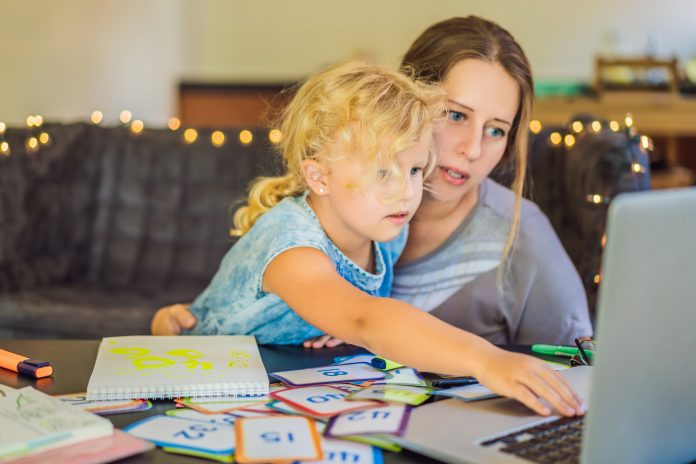Over 3 million students are homeschooled, in addition to children in micro-schools and alternative education programs.
As millions of students across the country prepare to go back to traditional public school, some estimates are that over three million K-12 students will soon begin their semesters at home for various reasons.
Brian D. Ray, president of the National Home Education Research Institute (NHERI) — a non-profit group that collects data regarding homeschooling — shared with Chalkboard News that his “best estimate” is that there are “slightly more” kids learning at home in 2022-2023 than 2021-2022.
He cautioned that while his estimates for 2022-23 were not yet finalized, the initial estimates for the total number of homeschooled K-12 students “might have barely moved up to 3.2 million.”
“On average, it’s 1.5 to 1.7 school-aged K-12 children per homeschool family,” Ray said to Chalkboard in an interview.
Ray, who holds a Ph.D. in science education from Oregon State University, has been studying homeschooling trends for nearly 40 years and said that the reasons that parents choose to educate their children at home vary widely, rather than a singular reason for having a “parent-directed home-based education” for their children.
“The large majority of parents will absolutely give two or three or four reasons for why they homeschool, and to try and get them to prioritize those reasons is pretty hard,” he said.
The National Center for Education Statistics (NCES) conducted a survey, last updated in May 2022, to identify the number of students homeschooled in the U.S. and the main reasons why parents choose to educate their children in that manner.
Just over 80% of polled parents cited “a concern about school environment, such as safety, drugs, or negative peer pressure” as a reason for homeschooling, followed by 74.7% of parents who homeschooled because they had “a desire to provide moral instruction.”
Subsequent reasons were an “emphasis on family life together” and “a dissatisfaction with the academic instruction of other schools,” at 74.6% and 72.6% of respondents, respectively. The fewest number of parents, about 3%, chose to homeschool because their “child has a temporary illness.”
According to a study by the U.S. Census Bureau in 2020, there was a massive increase in the number of African American families who said they were homeschooling their children because of school closures related to the COVID-19 pandemic.
Ray agreed that there has been significant growth in the number of African American families choosing to homeschool, but argued that the number has been on the rise for the past decade.
“Now people think that in the past three years, the U.S. Census Bureau said there was almost no African Americans homeschooling before that — that’s not true. There were,” he said. “That’s one of the main differences we’ve seen in the last 10 years — quite a bit of growth with Black and Hispanic families homeschooling.”
Before the COVID-19 pandemic, Dr. Ray shared that his research matched that of the U.S. Department of Education regarding particular growth regions for the homeschooling movement.
“The rate of homeschooling was a little higher in the south, southeast, and the west,” he told Chalkboard. “It was relatively a little lower, believe it or not, in the Midwest and New England.”
However, the relative growth of New England defied its pre-pandemic rates.
“During the school lockdowns, it seemed to grow the fastest in the New England area, actually. It shot up a lot,” he added.
According to data from the Home School Legal Defense Association (HSLDA), the northeastern states Massachusetts, New York, Pennsylvania, and Rhode Island have some of the highest regulations on homeschooling.
Ray also shared some of his estimates for future homeschooling trends.
“As far as the future, I think it’s going to continue to grow, not as fast as you saw in the last 10 years,” he said.
Ray said part of the reason for that is that parents who were homeschooled perpetuate it with their children, of which they may have multiple.
“From my research, those people who were homeschooled growing up are more likely to homeschool when they grow up,” he said. “So that means we will have more adults who are familiar with homeschooling and want to do it. Another growth factor: Homeschool families, on average, have a little more children than average.”
Ray suggested that competition from the growing number of micro-schools and alternative schools could impact the growth of homeschooling.
Also working against homeschooling is the time it takes by one parent: Ray underscored the challenge of homeschooling and the fact that it “is a bit of a sacrifice to live on one or one and a half incomes.”
Originally published by Chalkboard News. Republished with permission.
For more School Reform News.








